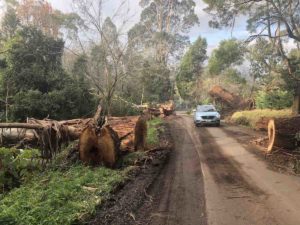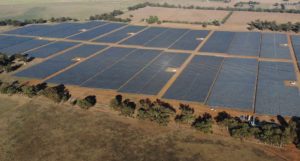Grid operator AusNet has warned customers in Victoria’s Dandenong Ranges they may be without power for another three and a half weeks, saying the wild weather on June 9 had caused the worst damage to its network “in a single incident in memory”.
The warning prompted the Victorian government to pledge $1,680 per week for up to three weeks to households in the area that are without power.
Large numbers of trees were uprooted across the heavily-wooded region east of Melbourne during the storms, many of them bringing down power lines. The damage is widespread and extreme, with large trees blocking the region’s many steep, winding roads, making access difficult. AusNet said 3,000 customers could remain without power until July 11.
“Customers in the worst affected areas of the Dandenongs should prepare to be without power for an extended time,” the company said in a statement on its website.
“The initial estimates provided to customers were wrong and we are deeply sorry for the distress this has caused. We now fully understand the extent of the damage and the scale of the recovery and repair ahead of us.”
AusNet said many sections of the network, including “some large lines”, were being rebuilt.
“Access to critical infrastructure has been severely inhibited by vegetation damage and inclement weather, and AusNet’s resources are very stretched.

“This is the worst damage to our network in a single incident in memory and there is a lot of work to be done to restore our network to a safe state. Back-up has been brought in from other networks to assist and our people and equipment are working at capacity to restore networks as quickly and safely as possible.
Affected towns include Kalorama, Mount Dandenong, Olinda, Sassafras, Sherbrooke, the Basin, Tremont, Upwey and Ferny Creek.
Speaking on Thursday morning, Energy and Environment Minister Lily D’Ambrosio said the extent of the damage had “been unprecedented in terms of our electricity infrastructure”.
She said AusNet had told her that the damage to the network caused over just two days was the equivalent of what they would normally expect in a two year period.
She said the Victorian government would provide $1,680 per week for up to three weeks to households without power, and who urged those who felt they were at risk as a result of the power outages to find alternative accommodation.
“The cold is absolutely very, very difficult and challenging at the best of times in this region, but we are doing all we can to provide that support and I would urge everyone that believes it is unsafe or unbearable for them to stay in their home to please seek alternative accommodation,” she said.
The Victorian government has requested that part of the money to pay for this aid package come from the federal government’s Disaster Recovery Funding Arrangements.
Ausnet said in most cases solar panels in blacked out areas would not work, and urged households not to try to change any wiring or settings on solar equipment.
“For the electricity system to work (be it on a small scale in your home or on a large scale across the whole electricity network), electricity produced needs to match the electricity consumed almost exactly at any point in time. Unless you have a home battery that is set up to work as an isolated system, your solar panels will not work,” it said.










